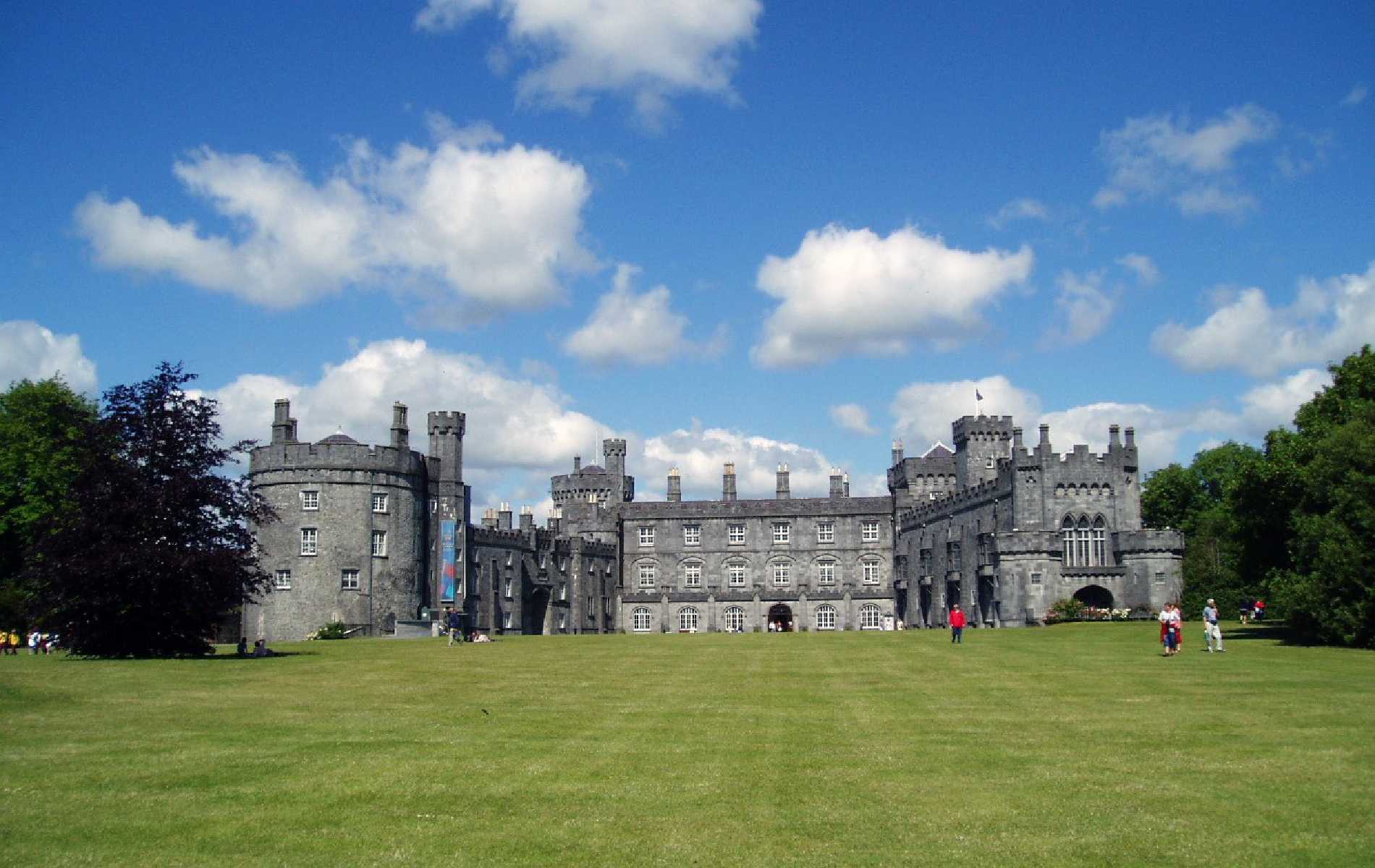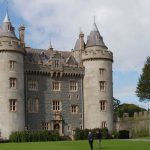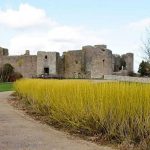Kilkenny Castle stands high above the River Nore in Kilkenny City. You will see it peeping out from between trees on your approach to the city, and if you are lucky enough to be here at night, its light will guide you home.
Originally built as a fortress by William Marshall in 1207, over the centuries it has been added onto and expanded until it now covers almost 5 acres of land. It is one of Ireland’s most important medieval buildings and a fascinating example of Norman architecture.
The castle was never taken by military force but instead surrendered after an extended siege during which William’s second son died defending it (no wonder he was so touchy about his honour!).
Despite being famous for his honour, William wasn’t a great example of chivalry. He was the illegitimate son of John De Courcey, the Earl of Pembroke. William grew up in England and joined the household of William The Marshal, who became Earl of Pembroke through marriage to a wealthy heiress.
William impressed his master during the war between King Stephen and Matilda de Blois (daughter of Henry I) and was granted land in Ireland that had been forfeited by Strongbow. This vast estate consisted almost entirely of estates confiscated from Irish kings whose loyalty to Henry I was questionable. It was a reward for William’s military service, and he became known as the ‘coloniser of Leinster’.
The castle that William built in 1207 was relatively small. It consisted of a strong tower within a rectangular enclosure with corner-towers, protected by a deep moat. This tower survived until the 17th century but no trace remains today other than its situation in relation to the later buildings.
The rectangular enclosure would have formed part of the defensive wall, which enclosed all of William’s lands – from St Mary’s Abbey in present-day Market Cross (originally just outside the castle) southwards to St Kieran’s Cathedral (which also originally lay outside the walls).
Originally, William’s castle followed the usual design of Norman castles, with a great hall on one side of the entrance and private chambers on the other. These rooms were accessed from a stone spiral staircase built into the thickness of the wall. The ground floor rooms would have been used for storage and stables; above was an upper floor which included sleeping quarters and a chapel for the use of William and his household.
A large tower (known as a keep) stood beside the great hall, which was located in an area called ‘the bailey’. The bailey was a large open space, surrounded by a wall which protected the rest of the castle from attack.
The tower beside the great hall was used to house all of William’s most valuable possessions. The first floor contained his private chamber and a chapel dedicated to St Lawrence, patron saint of lawyers and merchants. In 1237, William’s body was returned here for burial after he died in France. His son – also called William – requested that his body be moved to the Cistercian Abbey at Tintern to be interred beside his mother; this is why he is buried in Co Wexford today. At this time the building also became a mausoleum, as his body was joined by that of his son William the younger and many of his knights.
The ground floor was where all the working parts of the castle were located – including an impressive tower-gatehouse leading into the bailey, a chapel with an altar dedicated to St John the Evangelist, a hall big enough to accommodate all 400 of William’s knights, kitchens and latrines. All in all, it was a very impressive building for someone who had not received any formal education or training in architecture.
Aubrey de Vere, the 12th earl of Oxford, was responsible for building most of the castle that you see today. In the 14th century, he added large towers and massive curtain walls. A barbican was also built to protect access to the castle from any direction except across a bridge – and even then the bridge had drawbridges on both sides of it.
One of these new towers – Mortimer’s Tower – is named after Edmund Mortimer, who spent part of his life imprisoned here when he attempted to capture Kilkenny in order to ally himself with Richard II. This was the first time Mortimer had tried to capture Kilkenny and it would not be the last. In 1400, he returned with his brother-in-law Henry of Lancaster (son of John of Gaunt) and laid siege to the castle for three weeks before finally capturing it.
It is worth noting that most Norman castles did not survive long after the Normans left because they were so expensive to maintain in a hostile environment. However, Kilkenny Castle has been continuously occupied since its construction in 1207.
The most striking feature of Kilkenny Castle is the curtain wall that was added by Aubrey de Vere in 1385. It is widely believed that he constructed the castle to be impenetrable, so that it could never be turned against the crown. This was obviously a good idea since the castle has never been taken by force except on one occasion: in 1650, Cromwell’s army of 4,000 men took this castle and destroyed much of Kilkenny in the process.
These impressive curtain walls are surrounded by a ‘bailey’ which includes the remains of medieval gardens – probably cultivated by de Vere to supply food for the castle so that he did not have to leave it. The castle was never really taken by force and only surrendered once – when the Confederate Army entered it, before they destroyed the town in 1650.
Overlooking the castle is St Augustine’s tower, where the Catholic Martyrs were held. There are fourteen steps to the top which commemorate the fourteen stations of the cross. The tower was also used as a prison, though not all of its occupants were Catholics. In 1499, Thomas Butler, Earl of Ormond and other nobles were imprisoned here by Henry VII after they had tried to arrange a marriage between Prince Arthur and Katherine of Aragon.
Kilkenny Castle is certainly an impressive achievement for the medieval era, though it was not all smooth sailing. In 1331, it was besieged by Bruce’s troops after he had usurped the throne from Edward II. Bruce knew that the castle could withstand a siege and so instead took the city of Kilkenny – which caused Aubrey de Vere to surrender.
After the Civil War, Kilkenny Castle became a prison and Dickens used this as a setting for his famous novel Great Expectations. Pip is sent to live with his sister and her husband Herbert (Mr Jaggers) who turns out to be cruel and violent in equal measures. It is here that Pip raises the money to become a gentleman and moves to London.
Visiting Kilkenny Castle is perfect for a half day out or as part of a longer itinerary that includes the Rock of Cashel, Blarney Castle and the Black Abbey. There is plenty to see and do including an interactive museum, a guided tour of the castle and plenty of souvenirs in the gift shop.
If you enjoyed this article you might also like to read about:



